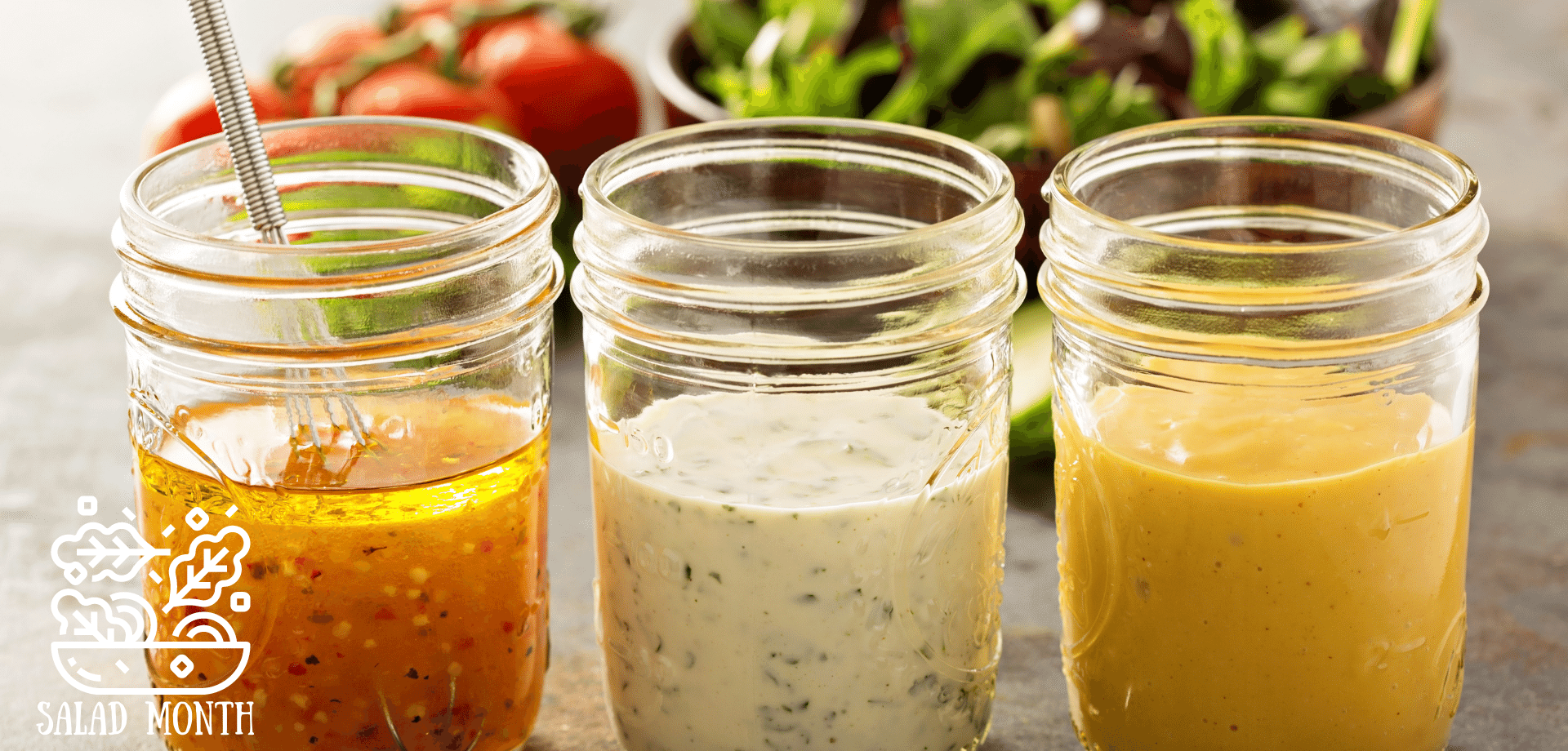Tips, Tricks, & Hacks: For Salad Month, we’re sharing step-saving skills to level up your salad game.
Buying store-bought salad dressing is a simple solution to speed up salad prep and we’re all for it if it encourages you to eat more salads. But what if it were even simpler – and tastier – to dress your salads from scratch? What if you really didn’t even have to make a dressing? Then you wouldn’t have 5 quarter full bottles of old dressing in your refrigerator door and you’d be eating more salads. Hmmm…read on.
Let’s Talk Salad Dressing…or Not
- Mad flavor without the dressing. You could forget the official salad dressing altogether. Well, not exactly. But there’s no need to make or buy a salad dressing separate from your salad. You can add mad flavor as simple as 1-2-3
- #1: Drizzling your salad greens with a high quality oil (extra virgin olive oil, sunflower oil, avocado oil, or if you’re feeling fancy, toasted walnut oil), and toss thoroughly. Start with less than you think. You can always add more later.
- #2: Add you salt and pepper, then toss again. We do it in this order because the oil on the greens helps the salt and pepper spread evenly. When we learned this, we were amazed by the difference this makes.
- #3: Add a nice vinegar and toss. Choose a high-quality vinegar that complements your ingredients. Red, white, or golden balsamic, sherry vinegar, champagne vinegar, apple cider vinegar, red or white wine vinegar. Then add in your other toppings.
- With greens so flavorful, you’ll find just a simple sprinkling of chopped nuts, dried fruit (we love dried cherries in salad) and a crumbly, salty cheese like feta make a simple but amazingly devourable salad.
- If you do make an actual salad dressing, do it in a jar Make your delicious, go-to vinaigrette dressings in a small jar. The old formula was 2 parts oil to one part acid, but dressing have changed. Today, we prefer equal parts. Instead of whisking in a bowl, just add your ingredients and shake vigorously — then refrigerate what you don’t use in the same jar.
Vinaigrette Foundations
- If you want to make your own vinaigrette, start with equal parts oil and acid. Yes, we know the old school recommendation was 2 or even 3 parts oil to one part vinegar, but no. Just no. Half a cup of dressing is plenty for a family-sized salad, so start with ¼ cup of each, if that’s what you’re doing.
- Extra virgin olive oil (we love fruity arbequina) or a nut oil like hazelnut or walnut are flavorful options; or you can use more neutral, light oils like grape seed, avocado, or sunflower, and really let the other ingredients drive the flavor. For acid, pretty much any vinegar will work, but let’s not use plain white vinegar. Our go-to is golden balsamic because it’s both lighter than red balsamic and also has some complexity. But you can use red, white, or golden balsamic, sherry vinegar, champagne vinegar, apple cider vinegar, red or white wine vinegar. Lemon and lime juice are also wonderful.
- Mustard is a must for a true vinaigrette. A good mustard adds flavor to your vinaigrette and helps keep the dressing emulsified. Without it, your oil and vinegar will separate quickly. Dijon is best. Use about a tablespoon for the ¼ cup/ ¼ cup ratio.
- A spoonful of sugar, as they say. A tablespoon doesn’t make dressing too sweet, but really works to enhance and blend the flavors. Depending on your other ingredients, honey, maple syrup, agave syrup, or granulated sugar works.
- Don’t skip the seasonings. Salt is another flavor enhancer, so don’t skip it. ¼ teaspoon (or a generous pinch) should do the trick. Don’t forget to grind some pepper in and any other spices and seasonings that go with your salad.
Ready to step up to Salad Slayer level? Click here for more dressing inspiration.





